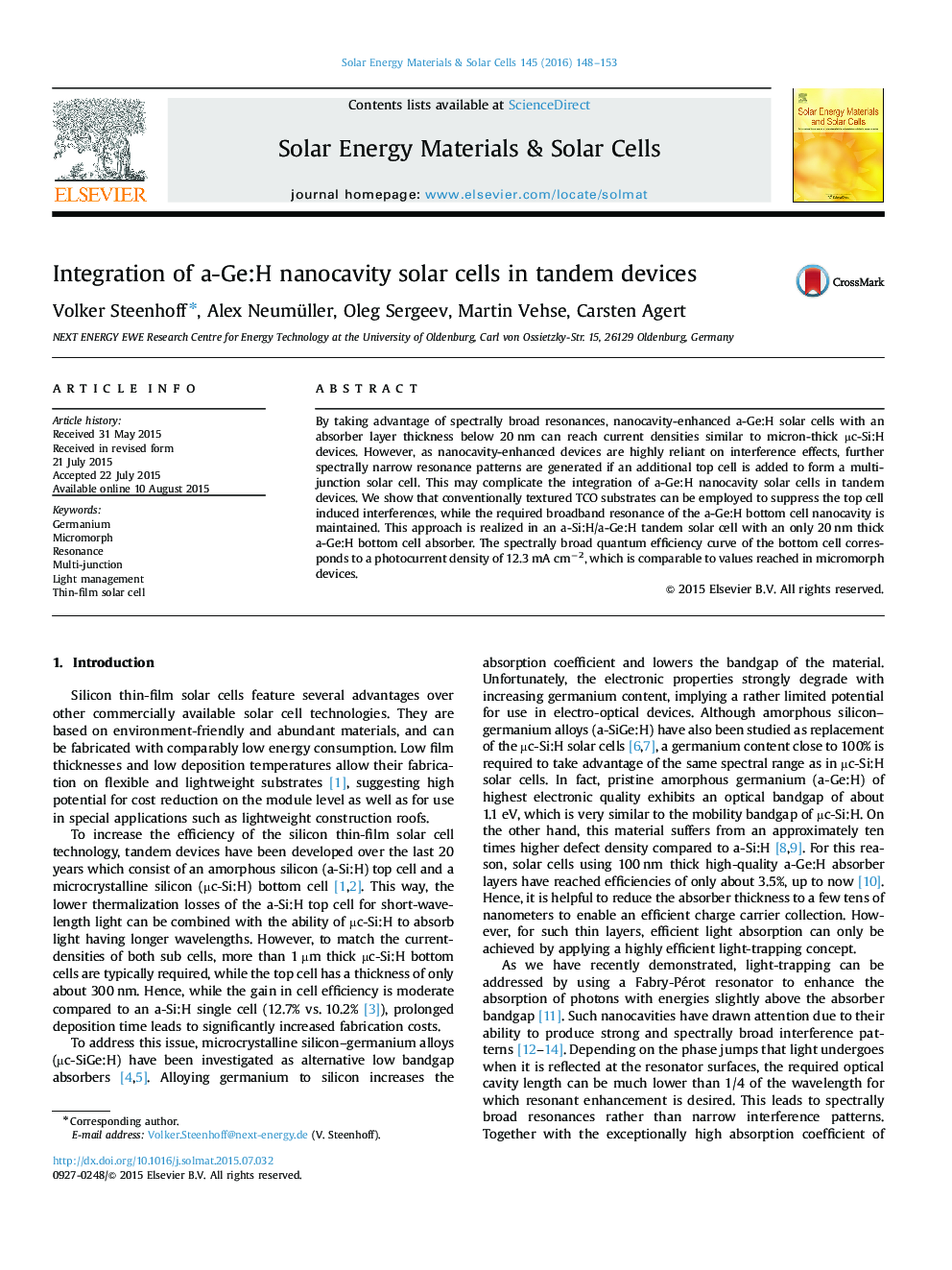| کد مقاله | کد نشریه | سال انتشار | مقاله انگلیسی | نسخه تمام متن |
|---|---|---|---|---|
| 77666 | 49292 | 2016 | 6 صفحه PDF | دانلود رایگان |
• Amorphous germanium (a-Ge:H) replaces µc-Si:H absorber in micromorph devices.
• A resonant nanocavity is used to enhance the bottom cell absorption.
• Additional undesired resonances are induced by the top cell.
• Rough interfaces suppress top cell induced resonances, but keep nanocavity effect.
• Current density similar to micromorph devices reachable with 20 nm a-Ge:H absorber.
By taking advantage of spectrally broad resonances, nanocavity-enhanced a-Ge:H solar cells with an absorber layer thickness below 20 nm can reach current densities similar to micron-thick µc-Si:H devices. However, as nanocavity-enhanced devices are highly reliant on interference effects, further spectrally narrow resonance patterns are generated if an additional top cell is added to form a multijunction solar cell. This may complicate the integration of a-Ge:H nanocavity solar cells in tandem devices. We show that conventionally textured TCO substrates can be employed to suppress the top cell induced interferences, while the required broadband resonance of the a-Ge:H bottom cell nanocavity is maintained. This approach is realized in an a-Si:H/a-Ge:H tandem solar cell with an only 20 nm thick a-Ge:H bottom cell absorber. The spectrally broad quantum efficiency curve of the bottom cell corresponds to a photocurrent density of 12.3 mA cm−2, which is comparable to values reached in micromorph devices.
Figure optionsDownload as PowerPoint slide
Journal: Solar Energy Materials and Solar Cells - Volume 145, Part 2, February 2016, Pages 148–153
